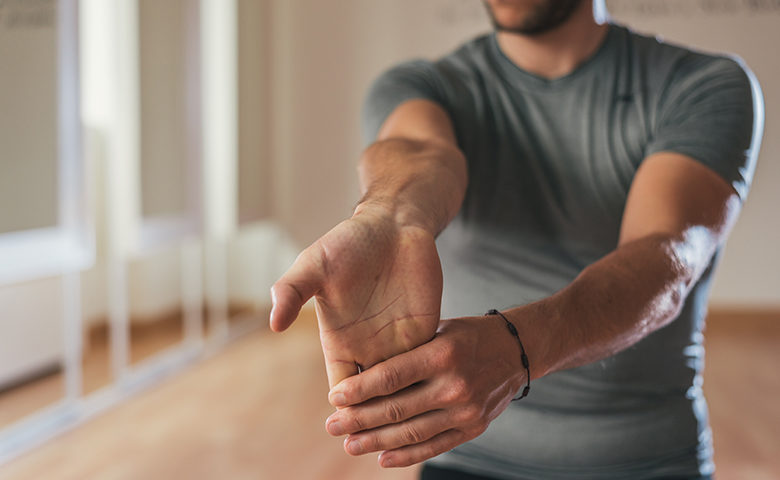Hand injuries are common to many job functions in any number of industries. In most cases, workers take their hands for granted. It’s not until hand use is limited or completely altered that people fully recognize how much they use their hands.
If you’re responsible for workplace safety, review the following ways to prevent hand injuries—before someone hurts their fingers, hand or wrist.
Protect hands on the job
The most obvious step in preventing workers from losing time from work due to an injury is to make sure they use the right PPE for every task they perform. Gloves can provide protection from cuts, abrasions, impact, and chemicals but it’s important to note that each kind of glove is specific to a task. Proper use and care of safety gloves are vital to hand safety.
A poor fit is the main reason gloves are removed when performing a job. If the gloves don’t fit properly, it doesn’t provide the dexterity employees need to perform their jobs adequately. It also compromises the protection the glove offers. When safety gloves are too big they can get caught in tools or machinery. Jewelry, such as rings, do not belong on the jobsite, especially under gloves, as they can change the fit of the glove and increase the risk of injury to the fingers.
A risk hazard analysis will determine the risks that workers must contend with on a job site. Wearing the prescribed PPE is the first step to avoiding injury. It’s also important to inspect tools or machinery before use to ensure that guards have not been removed. And remember that tools or machinery should only be used by people who have been trained to do so. During this training, it’s essential to note the safety features and emergency shutoff (where applicable).
Stretch
All workers need to worry about repetitive stress. Much like the body needs ergonomic stretch breaks, people need to take a break from work to stretch their wrists, hands and fingers. Stretching is a simple activity that can quickly provide hands with a break from work, and that workers can do to avoid pain and injury. Listed below are a couple of basic stretches—they should be performed with both hands, multiple times. (You shouldn’t feel pain when doing these stretches. Always consult your doctor before attempting new stretches or exercises.)
Finger stretch. Use a desk or table to stretch each finger. Start with your index finger and put the tip on the edge of the desk or table, keeping your finger straight. Slowly push down so your finger bends back and you can feel the stretch and hold for 10 seconds. Next, move on to the middle finger and repeat the process for each finger all the way to the pinky. To stretch your thumb, give yourself a “thumbs up” and gently pull it to the side with your other hand until you feel the stretch (open and close your fingers in a fist to get a better stretch). Do one final stretch of all fingers by pushing them back with the palm of your other hand and hold for 10 seconds. Switch hands and work your way through each finger and thumb.
Hand stretch. Make a fist by wrapping your thumb across your fingers. Hold for 5 or 10 seconds then release and spread your fingers wide, hold for another 5 or 10 seconds. Repeat a few times on each hand.
Wrist stretch. Extend your right arm out in front of you, palm facing out and point your fingers down towards the floor. With your left hand, grab the tips of all four fingers and pull them toward your chest. Hold the stretch for 20 seconds. Flip your hand so your palm is facing up but your fingers are still pointing down. Gently pull the tips of all four fingers towards your body. Hold the stretch for 20 seconds.
Finger-hand-shoulder stretch. Interlace your fingers and push your hands out in front of you, palms facing out. Hold this stretch for 20 seconds then lift your interlaced hands above your head, palms facing up, keeping arms aligned with your back. Hold for another 20 seconds.
Get a Grip. Firmly squeeze a tennis ball (or stress ball) in the palm of your hand for 10 seconds then release. Do 10 sets for each hand.
Human factors
Employees’ state of mind is an important factor in the safety of their hands. When people are fatigued, they’re more likely to overlook the hazards that put them in harm’s way. Rushing through tasks will impair their ability to think through the consequences of actions like picking up broken glass with bare hands in order to get it done faster.
Sharing stories of your own close calls or injuries can help others avoid making the same errors. Suggestions for good hand-related safety stories include: hitting your hand with a hammer, cutting yourself, or burning your hand, arm or wrist.
Being aware of how human factors influence hand injuries is the first step in building more reliable habits to avoid injury. Because hands seem to rank high on the injury list for workers, SafeStart’s list of suggested safety-related habits includes:
- Look carefully at anything you are going to stick your hand into or rest your hand on.
- Move your eyes first before you move your hands.
- Glance up before standing up or raising your hands.
- Keep your hands out of pinch points.
When it comes to hand safety, it’s not always the obvious risks that’ll hurt you the most. Musculoskeletal disorders are responsible for almost 30% of the total worker’s compensation costs. Take breaks and stretch to avoid repetitive stress injuries. But don’t forget about the more obvious hand risks—wear the proper PPE and be aware of how your state of mind impacts your judgment. Now give yourself a hand for making a move toward hand safety.

